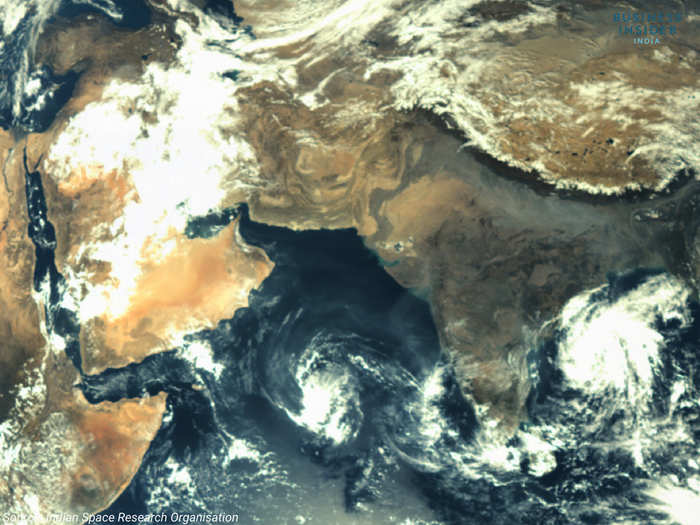
The first picture that the MCC took of India as it after it took off November 19, 2013.

The first picture that MOM took of the Martian surface.

Olympus Mons is the tallest planetary mountain in the Earth’s solar system. The volcano measures 2.5x the height of mount everest at a height of 26 kms above plains in the Tharsis region, a vast volcanic plateau.

Lying to the east of the Tharsis region, Kasei Valles is speculated to be the biggest outflow channel on the red planet. Theories hypothesize that the channel probably formed during gigantic floods resulting from tectonic and volcanic activity in Tharsis.

The the south east of Olympus Mons is Arsia Mons, on the Tharsis bulge next to the equator of Mars. It’s the last in a string of three volcanoes consisting of Pavonis Mons and Ascraeus Mons.

The Eos Chaos area is a part of the Valles Marineris, a set of canyons stretching across more than 4,000kms with a depth of upto 7kms. With those dimensions, it’s one of the largest canyons in the known solar system.
The Eos Chaos is only a 490kms stretch, but that’s still nearly long enough to cover the United States from the east to west coast.

It’s been theorised that dust storms are responsible for 10% of the water loss on Mars. And while, science-fiction movies portray Martian dust storms as deadly, winds actually rarely go faster than 60kms/hour. That’s less than half the speed of the hurricane winds on Earth.
 Tesla tells some laid-off employees their separation agreements are canceled and new ones are on the way
Tesla tells some laid-off employees their separation agreements are canceled and new ones are on the way Taylor Swift's 'The Tortured Poets Department' is the messiest, horniest, and funniest album she's ever made
Taylor Swift's 'The Tortured Poets Department' is the messiest, horniest, and funniest album she's ever made One of the world's only 5-star airlines seems to be considering asking business-class passengers to bring their own cutlery
One of the world's only 5-star airlines seems to be considering asking business-class passengers to bring their own cutlery Stock markets stage strong rebound after 4 days of slump; Sensex rallies 599 pts
Stock markets stage strong rebound after 4 days of slump; Sensex rallies 599 pts
 Sustainable Transportation Alternatives
Sustainable Transportation Alternatives
 10 Foods you should avoid eating when in stress
10 Foods you should avoid eating when in stress

Copyright © 2024. Times Internet Limited. All rights reserved.For reprint rights. Times Syndication Service.